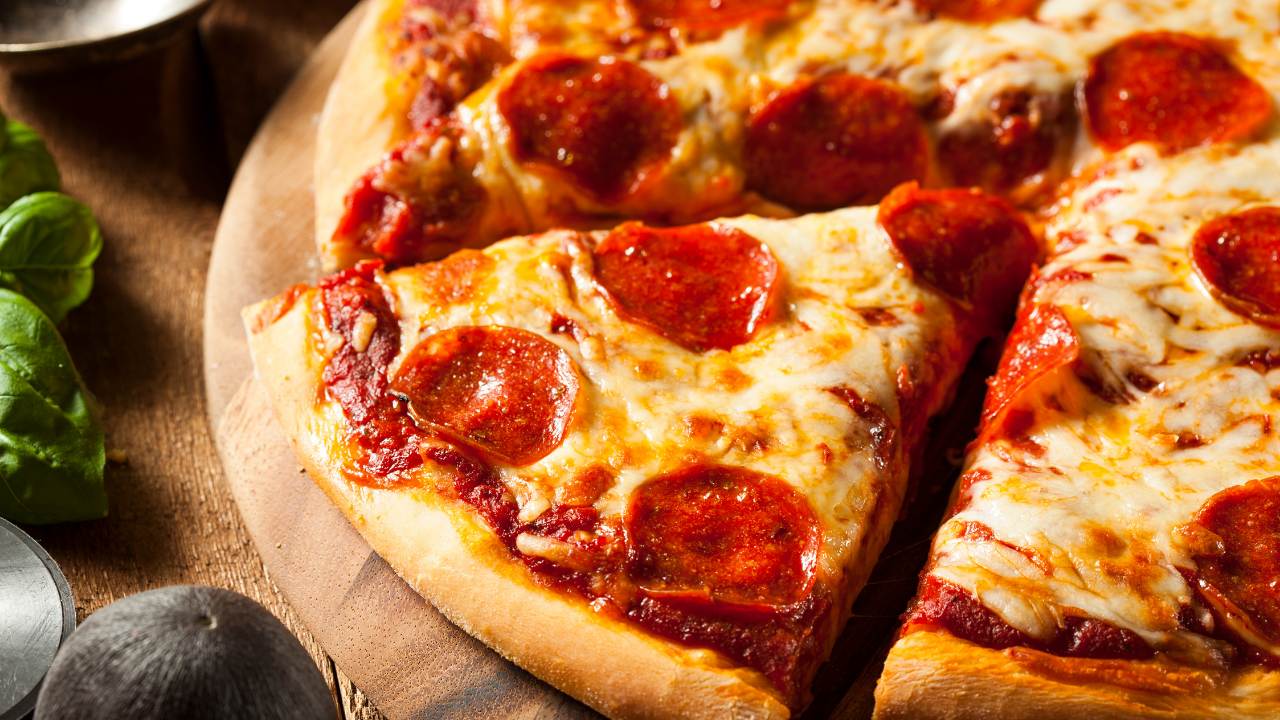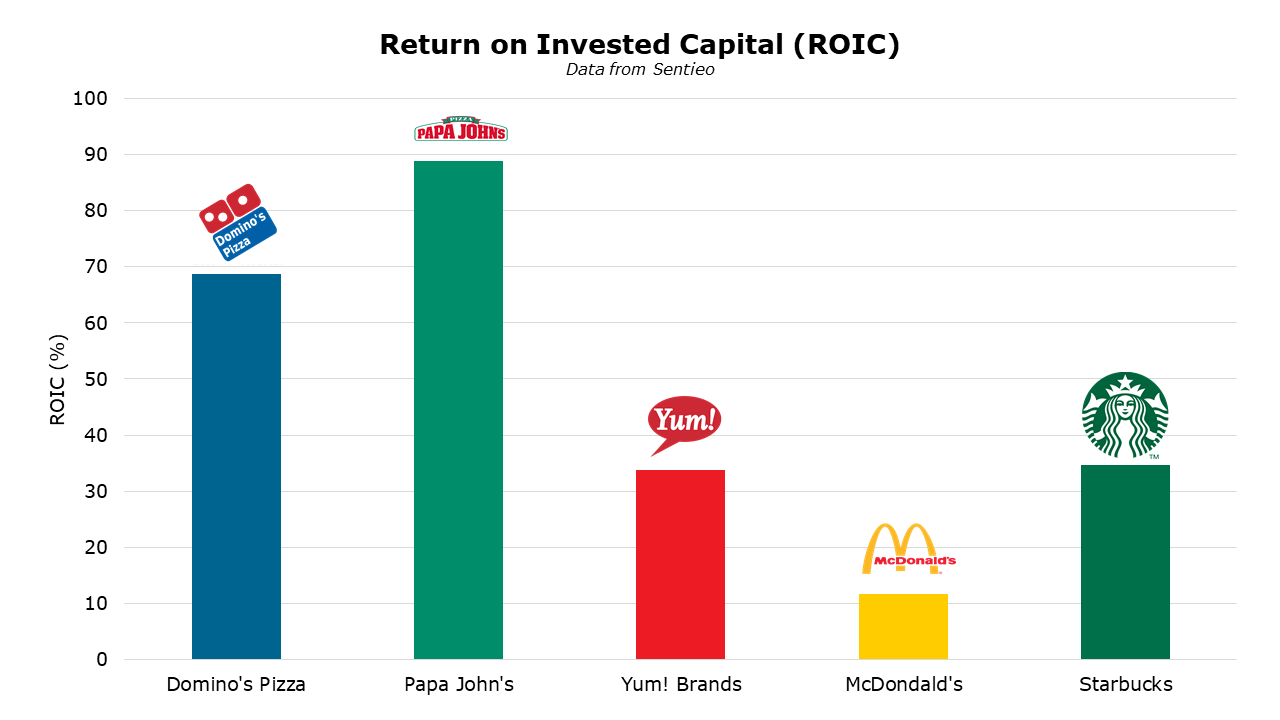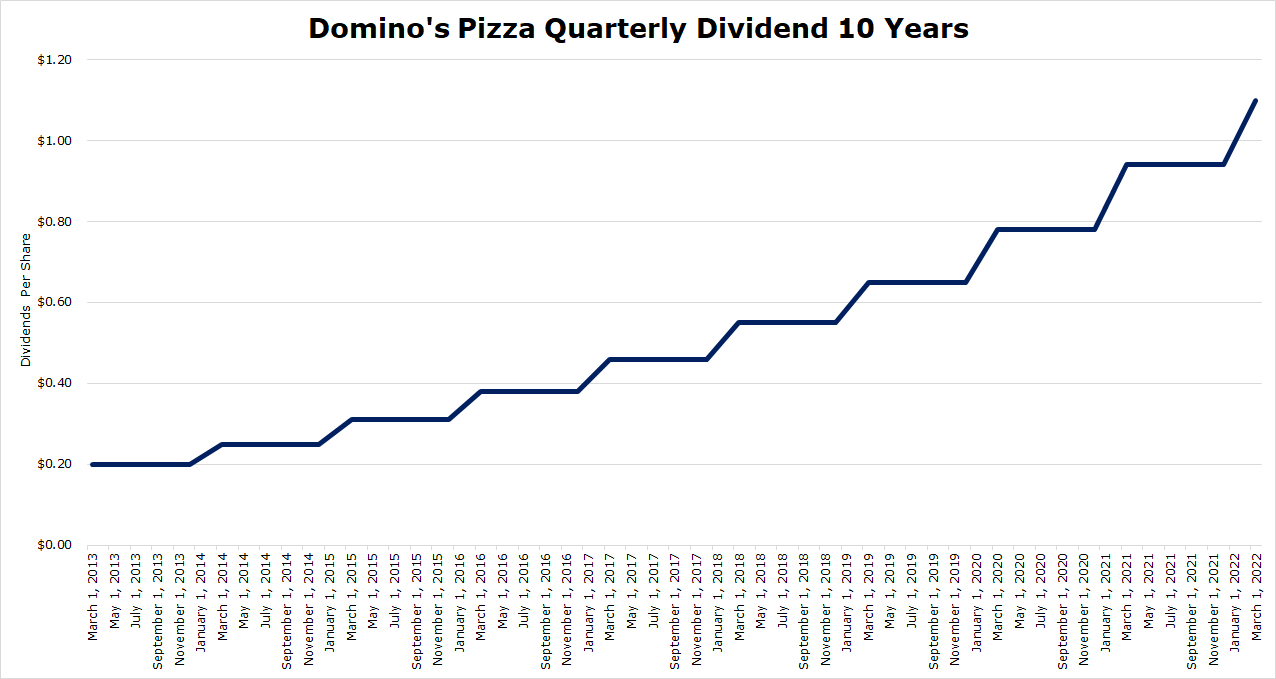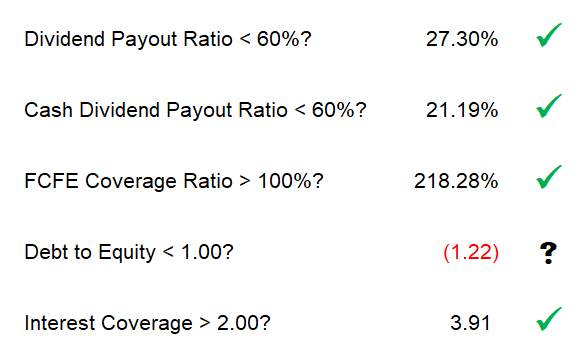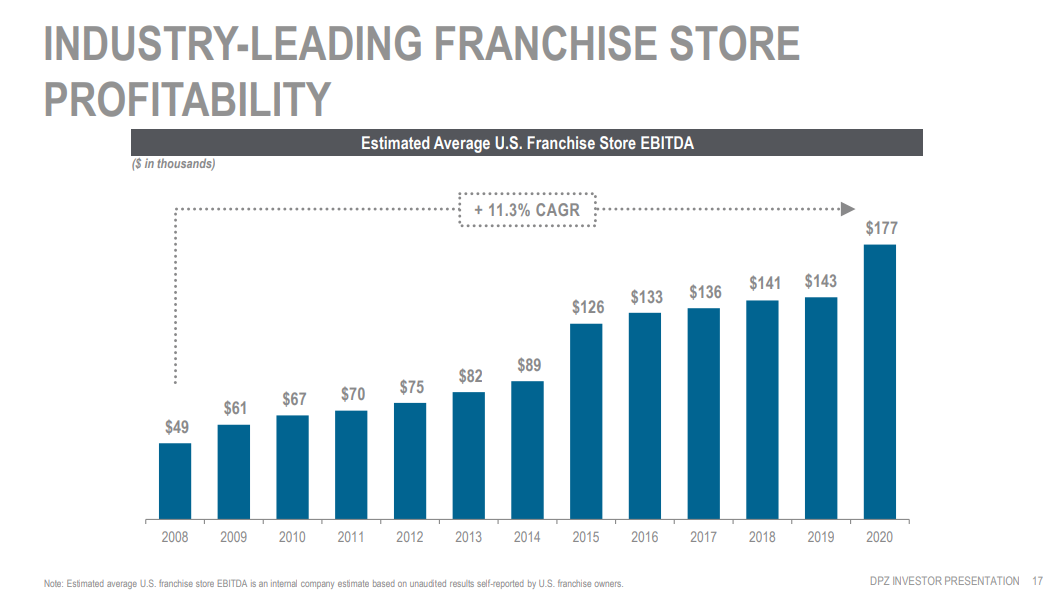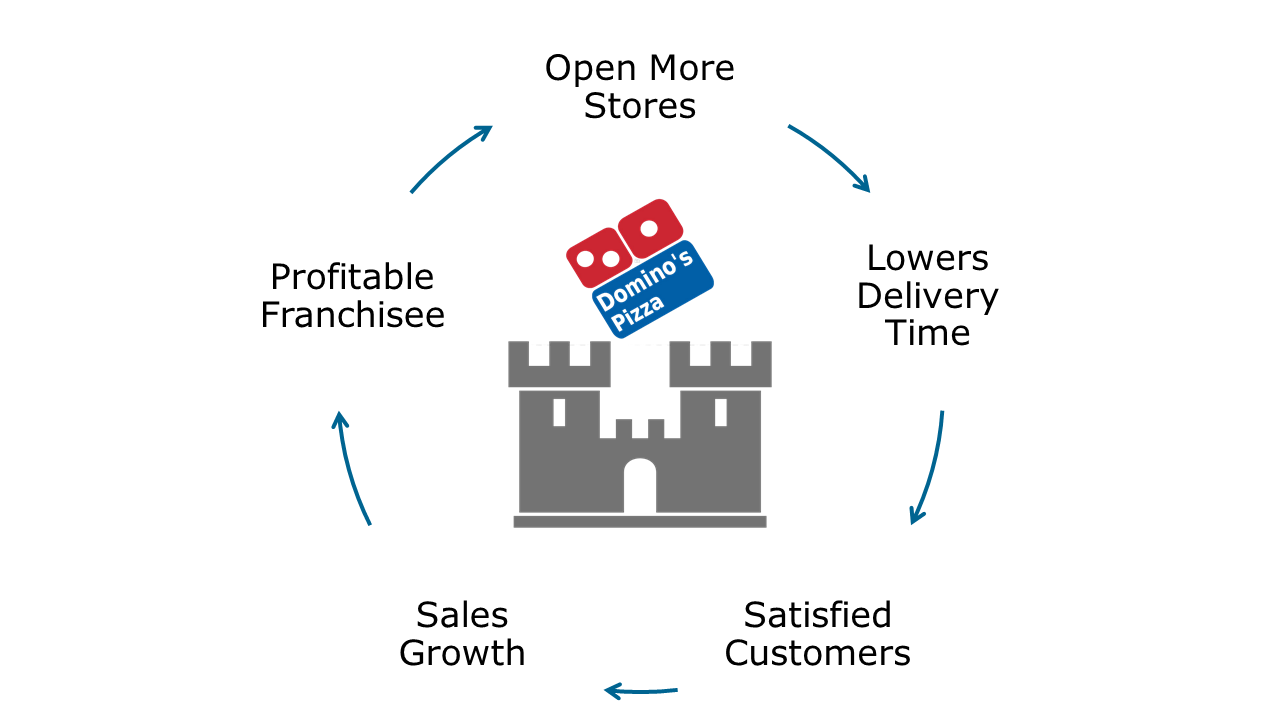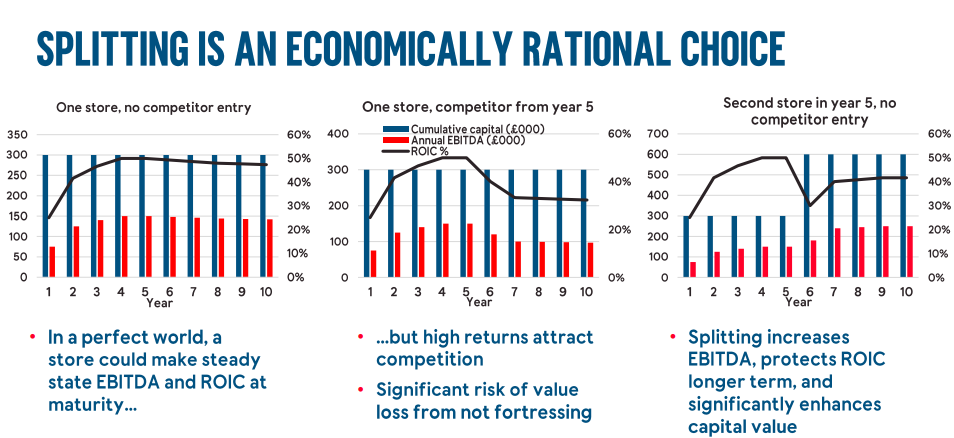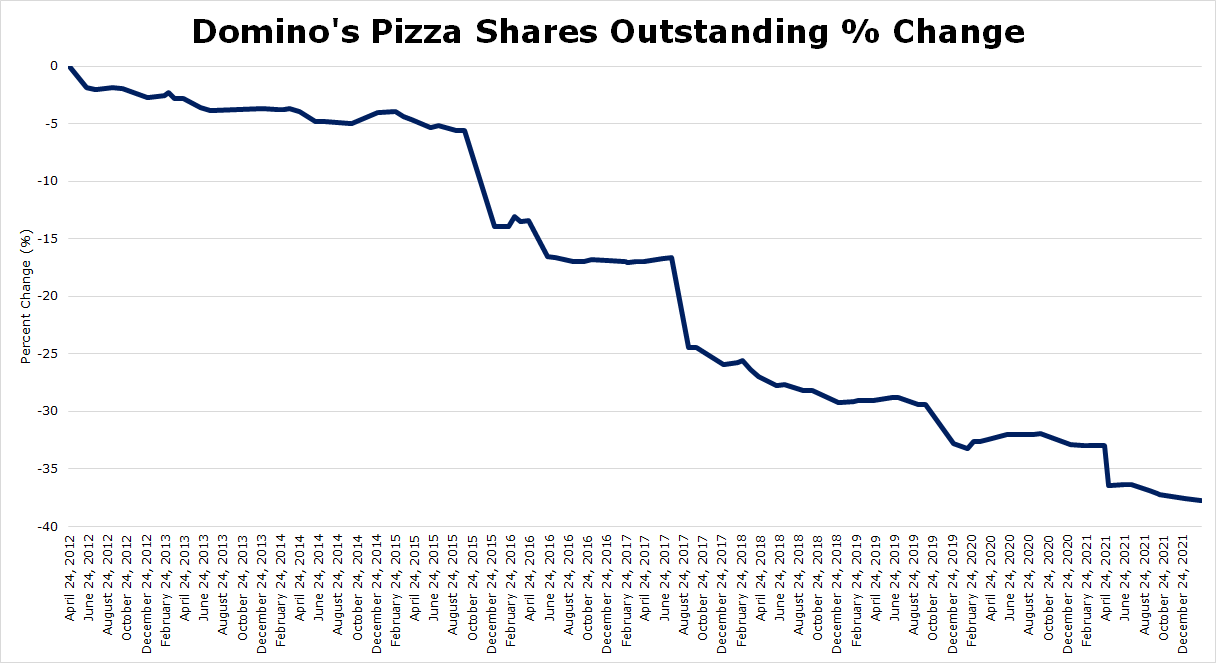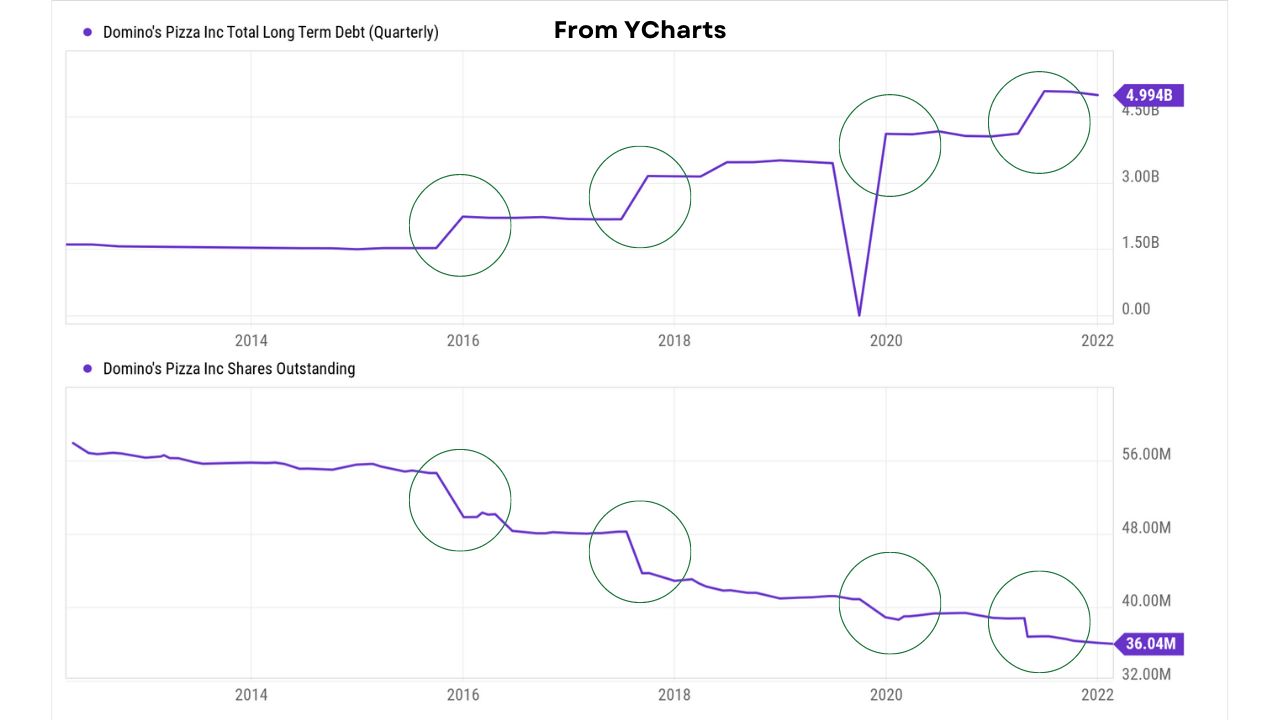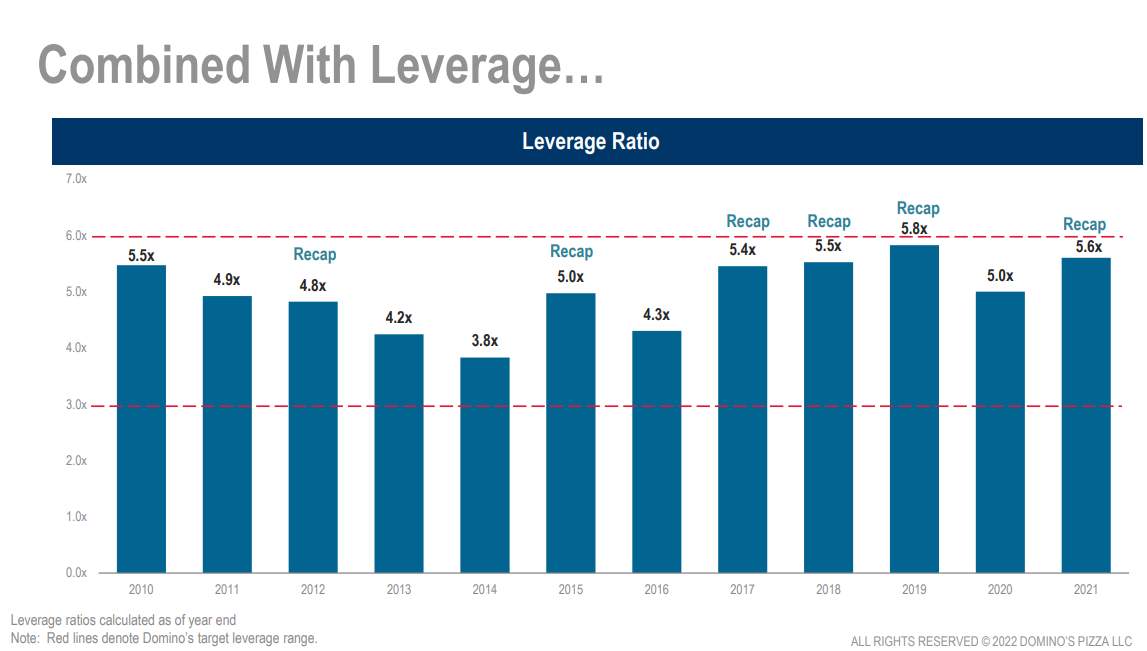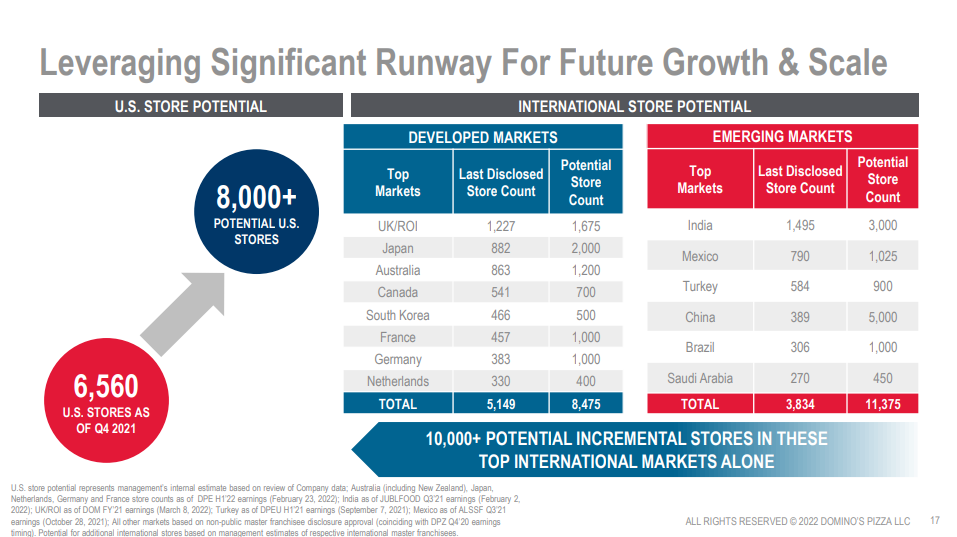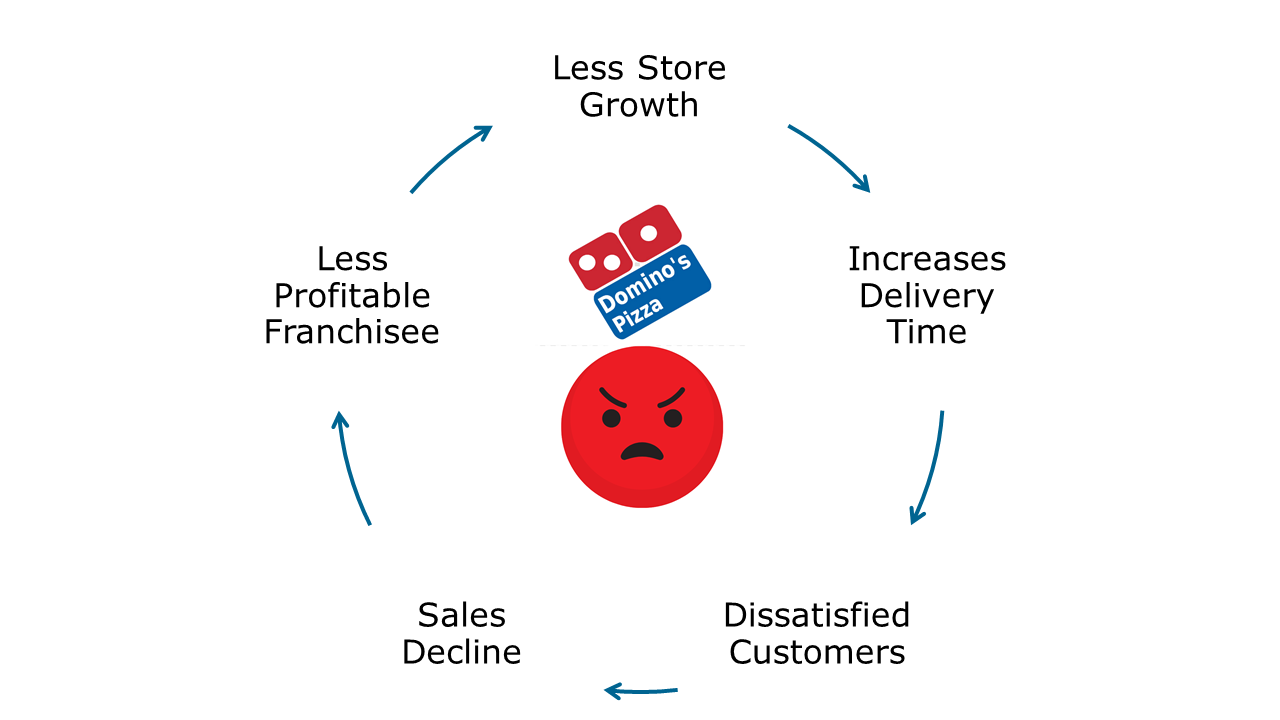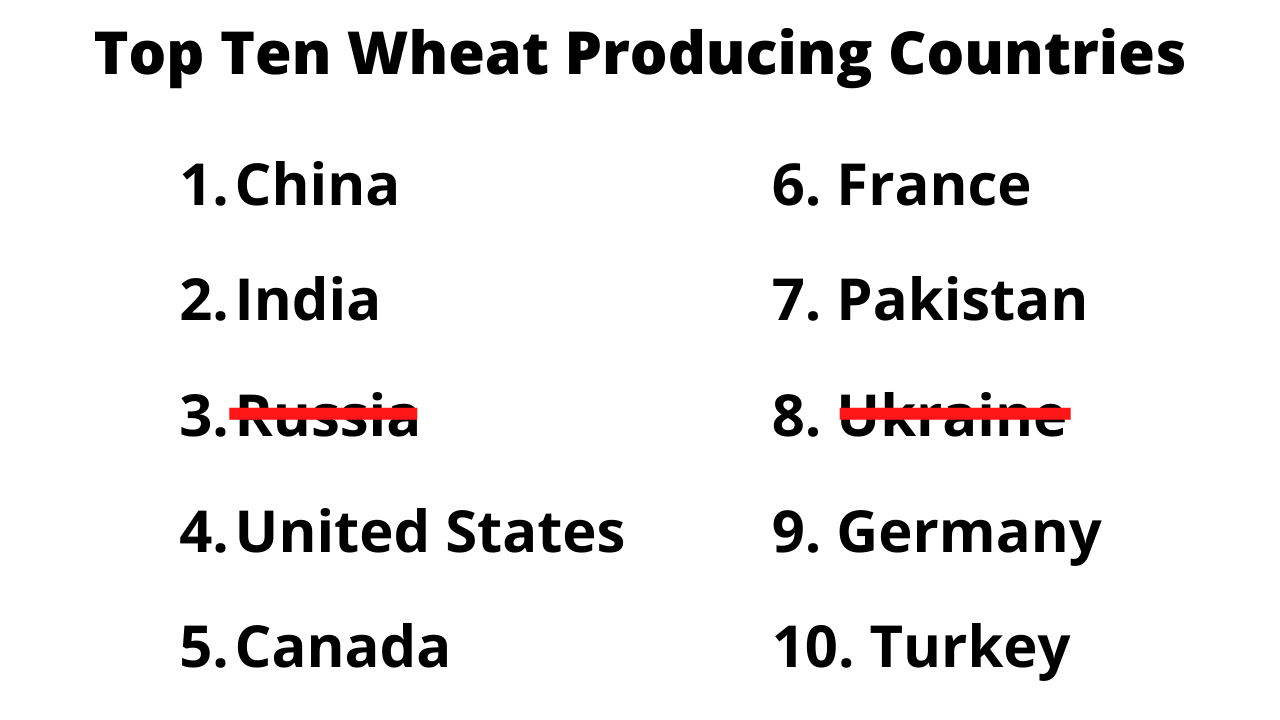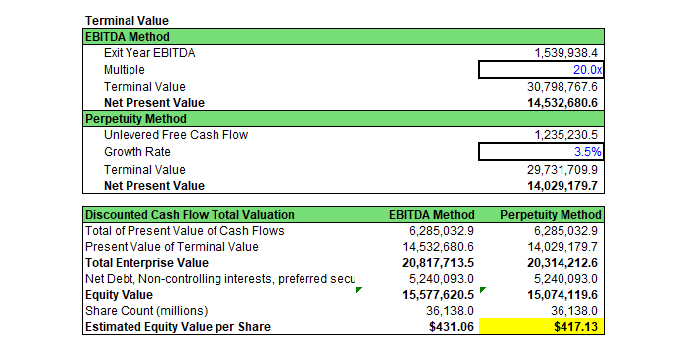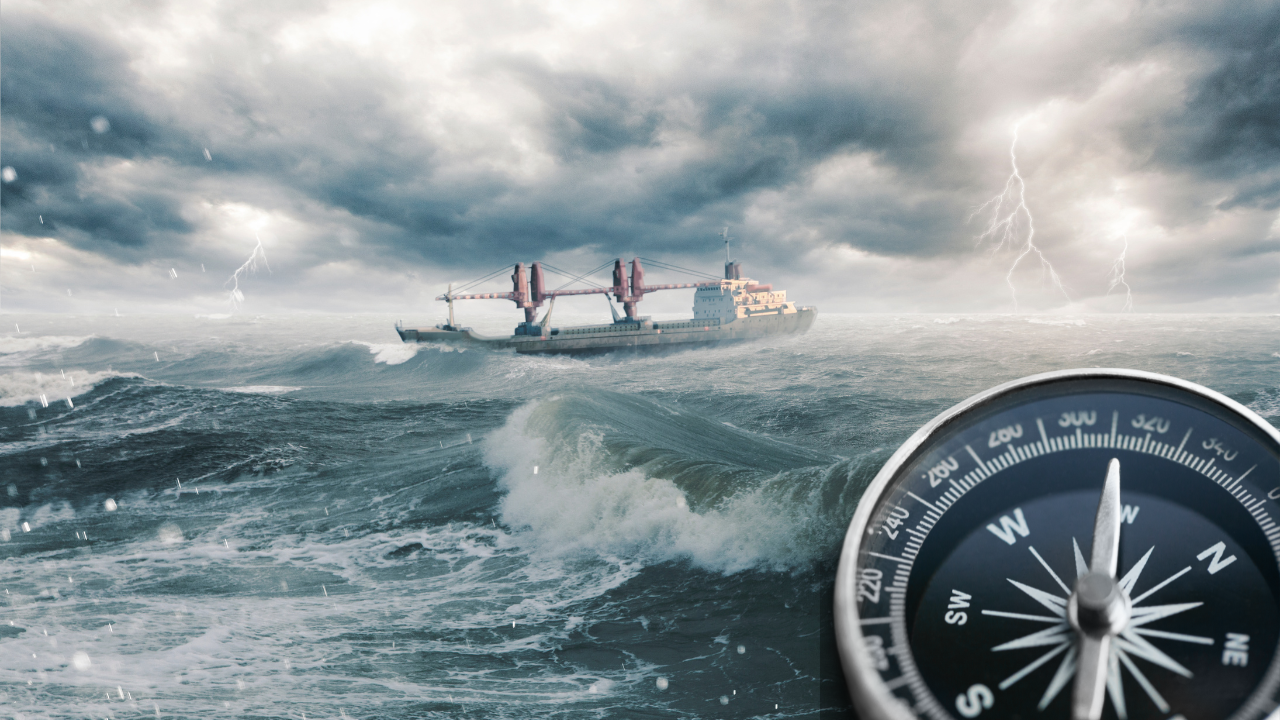The Perfect Food
Pizza is the perfect food. It’s a complex taste with the perfect blend of fat, sweet, and rich foods. Cheese provides the fat. Pizza sauce is sweet. And meat toppings provide the richness.
Pizza’s taste complexity is enhanced by two chemical reactions, Caramelization and the Maillard reaction. When pizza bakes, the natural sugars in its toppings and dough start to brown and caramelize. The Maillard reaction is the amino acids and sugars in high protein foods like cheese and pepperoni reacting with each other.
If that wasn’t enough, pizza is packed with glutamate. When you taste something savory, you’re tasting glutamate. The more savory the food, the more we crave it. Our tongue is loaded with sensors for glutamate ions. When glutamate hits our tongue, it activates our reward system. We get a rush of dopamine causing us to want to eat more pizza.
It is no wonder why we crave pizza and we eat large amounts of it.
In the United States, 350 slices are eaten every second, while 40 percent of Americans eat pizza at least once a week.
Pizza is also the perfect food for delivery. It’s flat, stackable, and built to withstand the rigors of a car ride.
A delivery-focused pizza business feeding our insatiable pizza demand should have high sales per square foot and high ROIC. Domino’s Pizza does.
Dividend History
Domino’s Pizza has compounded its quarterly dividend at 18.6% over 10 years and 19% over the last 5 years.
Dividend Safety
Domino’s passes every item on our dividend safety checklist. The negative Debt to equity ratio is not a concern. Like Home Depot, Domino’s Pizza consistently repurchases its shares. Domino's has repurchased so many shares that the Retained Deficit line item on its balance sheet—where Domino’s records its treasury stock repurchases—is so large it creates negative equity.
Catalysts for Price Appreciation and Dividend Growth
Unit Economics
The average cost to build out a Domino’s store is between $300,000 and $350,000. The average store earns between $1-1.3 million in revenue and the average store generates $177,000 in EBITDA.
A franchisee most likely financed the build out of their store and will have to pay interest. They’ll have to pay taxes too. So, actual free cash flow gets closer to $125,000 per store. A cash-on-cash return between 35-40%. With these returns, it takes about 3-4 years for a store to pay back the original cost. And this is not accounting for sales growth.
Potential franchisees want to be a part of Domino’s and current Franchisees want to open more stores. Domino’s leverages this demand to build more stores and to execute its "fortressing" strategy.
Fortressing
Fortressing is Domino’s term and strategy for growing same-store sales. You can think of it as Domino’s flywheel. If an area has one Domino’s store and, based on internal data, that store is reaching capacity, management will approach the franchisee about opening another store nearby. The initial thought is that this will cannibalize the previous store’s sales. But the opposite happens, same store sales actually increase. The reason for this is diagramed below.
The profitability of each store increases because of:
- Increased incremental carry-out orders
- Lower delivery times decreased delivery costs
- Drivers are busier and make more tip money, lowering employee turnover
- Costs can be spread across multiple stores
Fortressing also creates a barrier to entry to competitors and protects the returns on investment for the franchisee. The following image is from Domino’s UK 2018 investor presentation.
Fortressing protects the returns of its franchisees and their profitability. Franchisees want to open more stores which grows Domino’s global store count, it prevents competitors from moving in, and it increases system wide sales and cash flow.
Leveraged Recap & Repeat
Companies can return capital to shareholders through dividends and through share buybacks.
Over the last 10 years Domino’s has bought back over 37% of its shares outstanding.
Domino’s Pizza issues debt to buy back shares. This process is a leveraged recapitalization. Domino's operates an asset-light franchise business model. This type of business model produces consistent cash flow, and our insatiable pizza demand drives its growth. This allows management to conduct a leverage recapitalization every few years.
If Dominos’ leverage ratio remains within its target range, management will use its balance sheet to retire more shares.
Companies sometimes use share buybacks to signal to the market that their shares are undervalued. Domino’s Pizza is not doing this. Management is targeting an optimal capital structure and taking a systematic approach to their share buybacks.
Most CEOs are bad at capital allocation. They initiate buybacks when their stock is up and suspend buybacks when their stock price is down. Domino’s management is relying on their balance sheet to dictate when they'll return capital to shareholders. It removes their bias, and it creates a consistent predictable process.
The downside to this approach is management will miss the opportunity to buy back larger amounts of shares when their stock is cheap.
We’re OK with its systematic approach. As long as they remain consistent.
International Growth
Domino’s Pizza still has plenty of room to grow in the U.S. and other developed markets. But emerging markets, like China, are the main driver of Domino’s future store growth.
Emerging market growth is also one of the bigger immediate risks that we discuss below.
Risks
Lack of Drivers
Restaurants of all shapes and sizes are having trouble filling open job positions. With unemployment rates so low and so many open job positions across all industries, former restaurant workers are finding more lucrative opportunities elsewhere. Domino’s is having trouble filling delivery positions.
Putting this through the flywheel framework. A lack of drivers increases delivery time. This leads to dissatisfied customers and declining sales. Franchisees are less profitable and don't want to open more stores. Which leads to lower total store growth.
Something that seems minor, like fewer drivers available, can lead to big issues as it cascades through their "flywheel”. These short-term issues can cause us to overvalue Domino’s Pizza as it harms its future cash flow.
Domino’s is offering discounts on carryout orders to combat their driver shortage and to keep customers happy. But people want their pizza delivered. That’s the main reason to order Domino’s. If they must drive to go get it themselves, then why not order from any other restaurant that offers carryout?
Covid
Most of the developed Western world is reducing their Covid restrictions if they haven't removed them already. If a more lethal and infectious variant circulates around the world, countries might impose lockdowns and restrictions on gatherings again.
Domino’s benefits more from an open economy and large social gatherings. What food do you buy to please a large crowd? Pizza of course.
There will be some short-term headwinds with people going out more instead of ordering a pizza at home. But eventually we expect domino’s same store sales growth trends to revert to pre-pandemic levels once the novelty of dining out again wears off. As Jerry Seinfeld said, once you’re out it’s time to get back.
Where Covid is still causing problems is in Southeast Asia, mainly China. China is still implementing a zero-Covid policy and China is a big source of growth for Domino’s Pizza. City-wide lockdowns and quarantines hurt current sales and delay the opening of new stores. This will affect the expected timing of future cash flows. This will lower the present value of Domino’s stock and make our current estimate of fair value too high. No matter how good a company is, if you pay too high a price, you’ll generate poor returns.
Supply Chains & Inflation
Part of Domino’s consumer appeal is its affordable pricing strategy. Pizza is cheap to make because its main ingredients are dough, pizza sauce, and cheese.
If the costs of its main ingredients rise, then Domino’s faces a dilemma. Either raise prices to offset rising costs and lose sales. Or don’t raise prices and sacrifice profitability and risk hurting your franchisees
The knock-on effect of Covid and the war in Ukraine is further supply chain disruptions and increased inflation. Ukraine and Russia are two of the top ten producers of wheat. You cannot take them off the global market without affecting global wheat prices.
We’ll need to see how increased input costs are affecting Domino’s current business, how management is handling the increased costs, and the reaction from its customers.
QSR is a competitive industry and consumers have many choices. A wrong move that alienates its core customers can have lasting effects on its business.
Valuation
The standard valuation tool is the discounted cash flow model. Make some forward projections about revenue, margins, and capex to derive future cash flows. Then discount them back to today, sum them, remove debt, and divide by shares outstanding to get a per share estimate of fair value. We arrive at a price of $417 per share using the perpetuity method.
If we invert this process, we can determine what future the market is pricing in with today’s share price. Michael Mauboussin and his co-author Alfred Rappaport call this Price Implied Expectations analysis, P.I.E. analysis. An appropriate name for analysis on a Pizza company.
The big concern is rising costs and margin erosion. The last big inflation scare was in late 2007 with rising energy and food prices. Domino’s operating margin then was 14%. I’ll use that as Domino’s target margin rate. If I keep Domino’s expected sales growth at 7%, I still can’t arrive at today’s price. Next, I adjust the expected revenue growth. If I take it down to 4%, I can arrive at today’s market price.
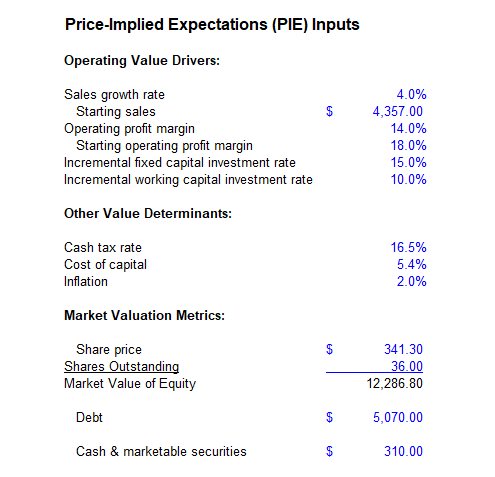
Domino's Pizza is the example used in the book. Their P.I.E. Analysis is here.
The market is expecting below consensus sales and Domino’s margins to lose 400 basis points. If either one of these expectations do not happen, then the market is drastically undervaluing Domino’s Pizza.
At today’s prices we think Domino’s Pizza is well worth these risks.


